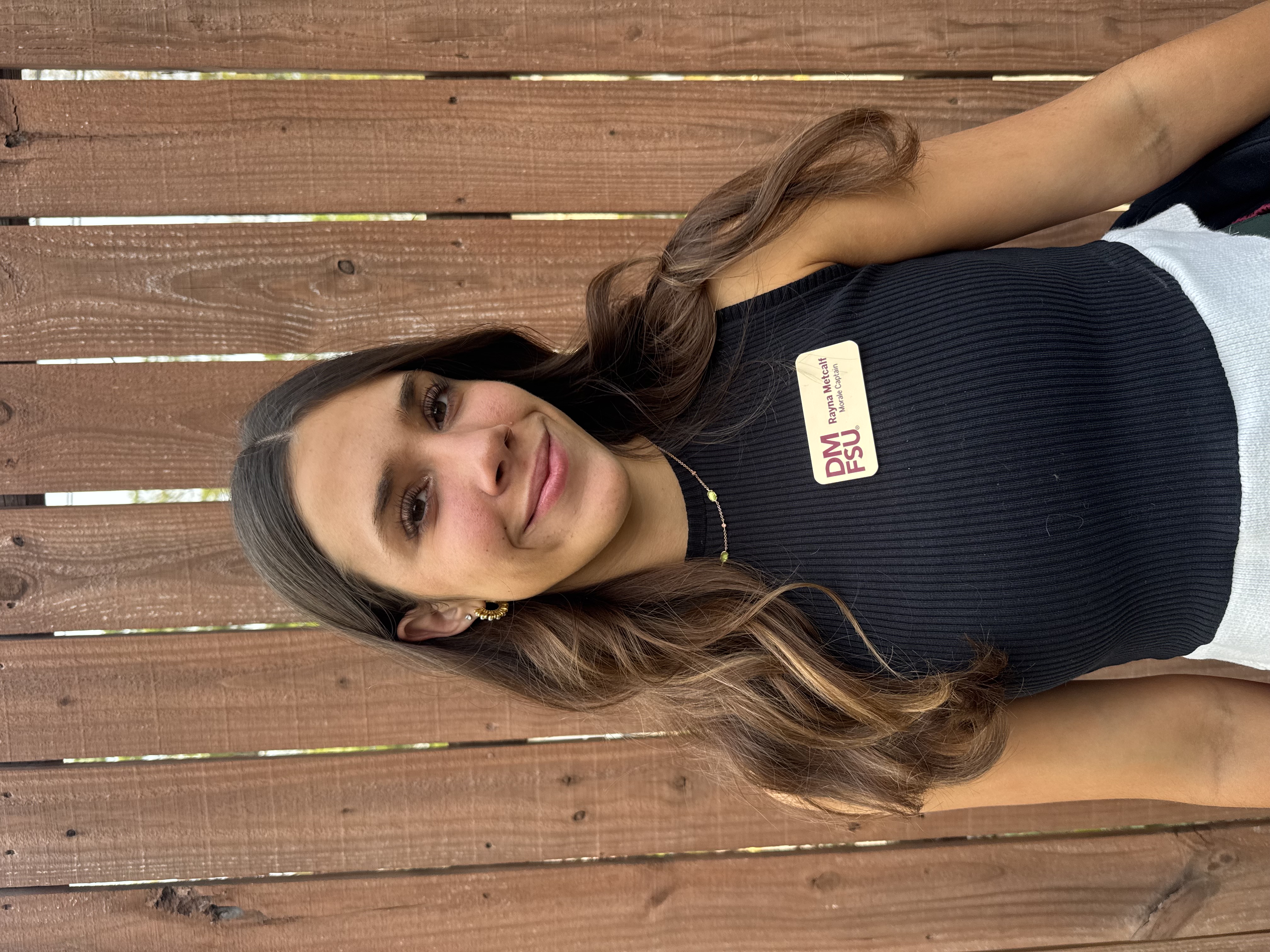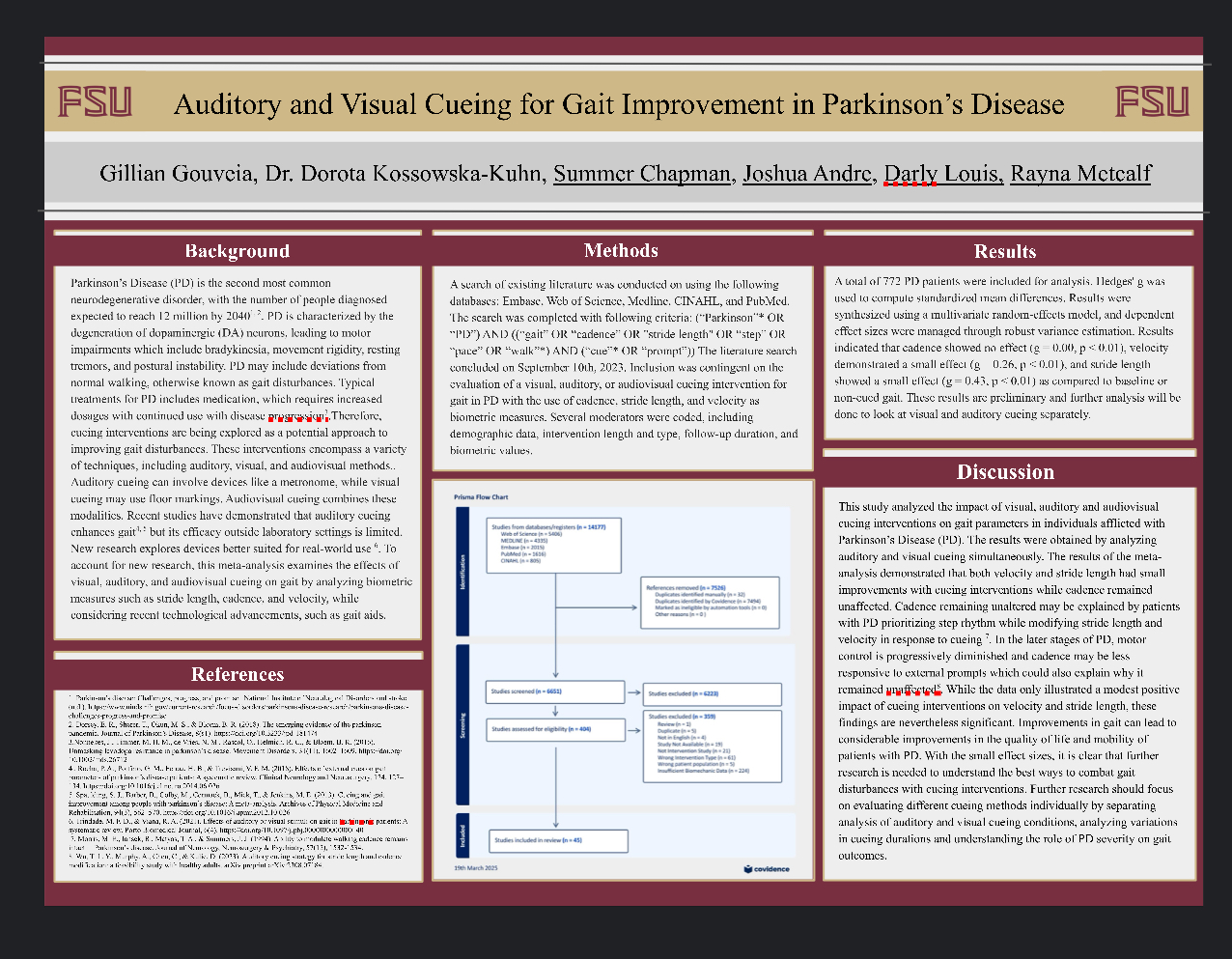Research Symposium
25th annual Undergraduate Research Symposium, April 1, 2025
Rayna Metcalf Poster Session 3: 1:45 pm - 2:45 pm / Poster #267

BIO
Apart from participating in research, I am also a member of Seminole Dance Force and am a morale captain for Dance Marathon!
Auditory and Visual Cueing for Gait Improvement in Parkinson’s Disease
Authors: Rayna Metcalf, Gillian GouveiaStudent Major: cell and molecular neuroscience
Mentor: Gillian Gouveia
Mentor's Department: Psychology Mentor's College: College of arts and sciences Co-Presenters:
Abstract
Parkinson’s Disease (PD) is the second most common neurodegenerative disorder, with the number of people diagnosed expected to reach 12 million by 20401, 2. PD is characterized by the degeneration of dopaminergic (DA) neurons, leading to motor impairments which include bradykinesia, movement rigidity, resting tremors, and postural instability. PD may include deviations from normal walking, otherwise known as gait disturbances. Typical treatments for PD includes medication, which requires increased dosages with continued use with disease progression3.Therefore, cueing interventions are being explored as a potential approach to improving gait disturbances. These interventions encompass a variety of techniques, including auditory, visual, and audiovisual methods.. Auditory cueing can involve devices like a metronome, while visual cueing may use floor markings. Audiovisual cueing combines these modalities. Recent studies have demonstrated that auditory cueing enhances gait4, 5 but its efficacy outside laboratory settings is limited. New research explores devices better suited for real-world use 6. To account for new research, this meta-analysis examines the effects of visual, auditory, and audiovisual cueing on gait by analyzing biometric measures such as stride length, cadence, and velocity, while considering recent technological advancements, such as gait aids.
Keywords: Parkinson’s Disease Gait


